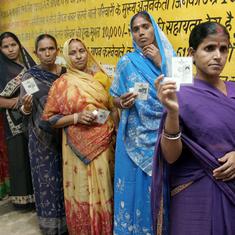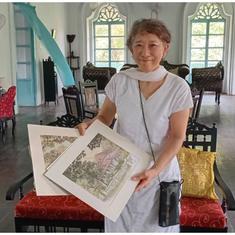Women make up 55% of voters who are excluded from Bihar’s draft voter list after the Special Intensive Revision, shows a Scroll analysis of data published by the Election Commission of India on August 1.
The data also shows that five of the state’s 10 districts with the largest share of Muslim population have the highest number of excluded voters.
The draft list includes voters who submitted their enumeration forms to the poll body between June 24 and July 26. They will now have to produce proof of citizenship to make it to the final list that will be published on September 30.
At 15.1%, Gopalganj district in western Bihar saw the highest rate of exclusion in the state. The voter list in the district's Gopalganj assembly constituency shrunk by 18.25% – also the highest in the state.
The draft roll has removed nearly 65.6 lakh voters. Of them, 22.3 lakh were dead, 36.3 lakh had permanently moved or were absent, and 7 lakh were enrolled in multiple places, the Election Commission said.
Exclusion higher among women
In 43 of the 243 assembly constituencies in Bihar, 60% or more of those excluded from the draft roll are women.
This is a comparison based on the electoral roll released on January 1, 2025 and the draft roll released on August 1, 2025.
Women voters made up 47.7% of Bihar’s electorate in January this year. In the draft roll after the SIR, this has decreased to 47.2%.
At 69%, the exclusion of women is highest in Rajpur, an assembly constituency reserved for Scheduled Caste voters in Kaimur district in south Bihar. This figure stands at 63% for Brahampur assembly in this district
Kaimur also recorded the highest exclusion of women voters from the draft roll across all districts in Bihar – 64%. It is followed by Buxar district at 63%.
On the other hand, in Barhara constituency in Bhojpur district, nearly 75% of those excluded in the voter list are men.
Exclusion increases with Muslim population
In the top ten districts with the highest percentage of excluded voters in Bihar, five have the biggest share of Muslim population.
These are Purnia, Kishanganj, Madhubani, Bhagalpur and Sitamarhi districts.
When the exclusion rate in all 38 districts in Bihar is plotted against their Muslim population, the Election Commission data shows that the more the number of Muslims in a district, the higher the number of excluded voters it has.
It is the opposite with Scheduled Caste voters. The number of excluded voters tends to fall with the rising share of SC population in the state’s districts.
Assemblies with highest exclusions
Six assembly constituencies in Gopalganj district in western Bihar figure among the top 20 assemblies with highest number of excluded voters.
This includes Gopalganj, Kuchaikote, Barauli, Hathua, Baikunthpur and Bhorey constituencies.
Three assemblies from Purnia district – Purnia, Amour and Dhamdaha – also saw high exclusions.










